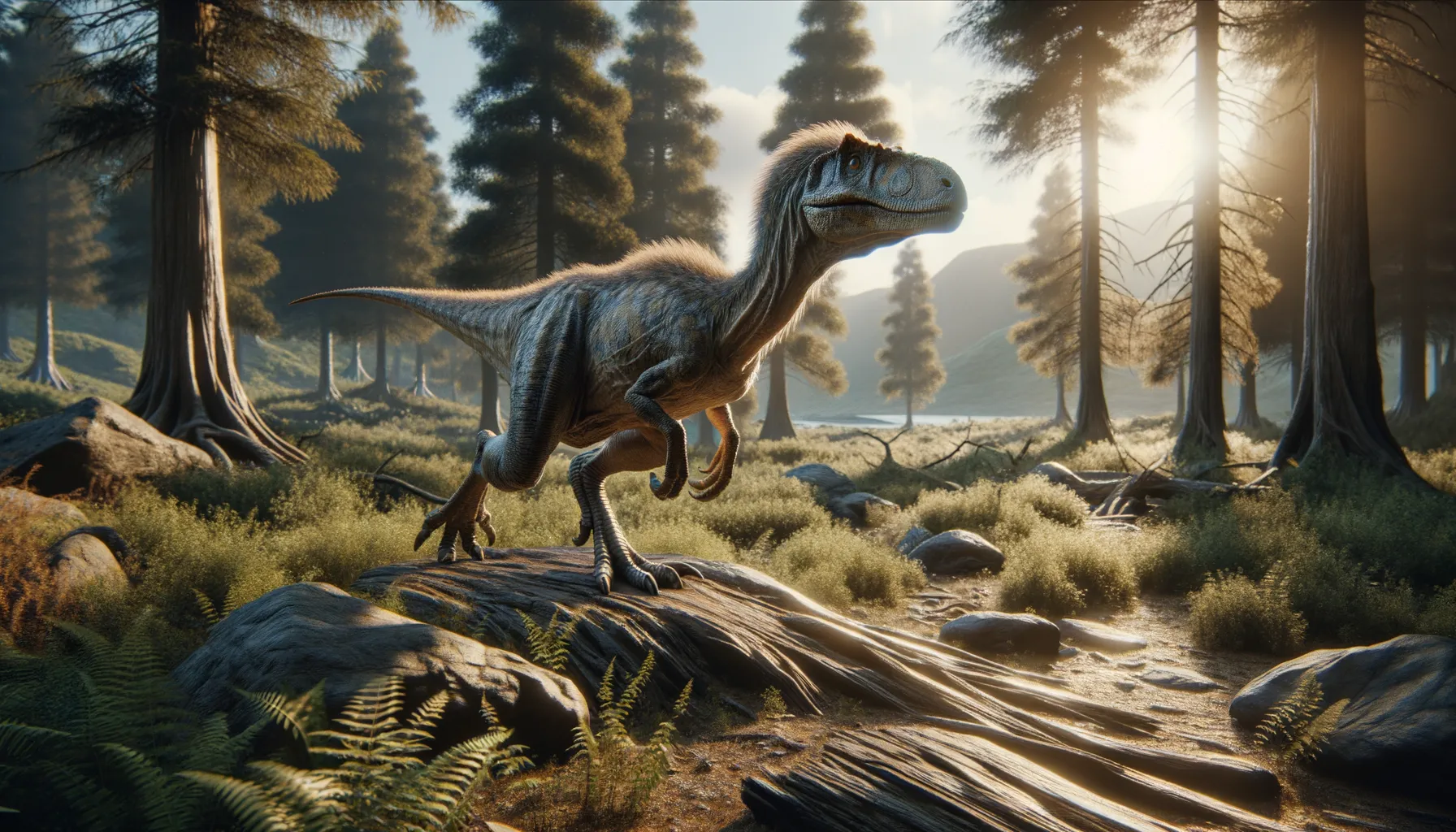
Compsognathus
Swift and tiny hunter of the Jurassic age.
Period
Jurassic
Length
About 1 meter long.
Height
Roughly 30 centimeters tall at the hips.
Weight
Approximately 2.5 kilograms.
Compsognathus was a small, bipedal dinosaur that lived during the Jurassic period. It is often noted for its chicken-sized stature, making it one of the smallest dinosaurs known. With a slender body and long legs, it was likely a swift predator. Its delicate features and physical build suggest it was quick and agile, capable of darting through its environment in pursuit of prey.
Diet
Compsognathus primarily fed on small vertebrates and insects. This carnivorous dinosaur is thought to have been an opportunistic feeder, snapping up whatever edible creatures it could find.
Hunting
Its hunting behavior would have involved quick dashes to catch its prey. The long legs suggest it was adept at pursuing faster, smaller animals, relying on speed over brute strength.
Environmental challenges
During its time, Compsognathus faced predators from larger theropods and had to be wary of these threats. The fluctuating environments in the Jurassic would have required it to adapt to various flora and fauna. Surviving in such a dynamic habitat required keen senses and agility to find food and avoid becoming prey itself.
Speed
Quick, agile, and capable of short bursts.
Lifespan
Estimated to live around 10 to 15 years.
First discovery
Found in 1859 in Bavaria, Germany.
Fun Facts
- Compsognathus was a small theropod dinosaur that lived around 150 million years ago during the late Jurassic period.
- It was roughly the size of a turkey, with some specimens measuring just about 3 feet in length.
- Compsognathus is one of the few dinosaurs for which we have direct evidence of what they ate, as fossilized remains of small lizards have been found in its stomach.
- The first Compsognathus fossils were discovered in the 19th century, and they were one of the earliest relatively complete dinosaur skeletons found.
- This dinosaur had long legs, suggesting it was a fast runner, possibly able to chase down small prey.
- Compsognathus is often regarded as one of the closest relatives to early birds, giving clues about the evolutionary link between dinosaurs and modern avian species.
Growth and Development
Compsognathus likely hatched from eggs like other theropods and grew rapidly to reach its small adult size. Juveniles needed to develop quickly to evade predators and compete for food. Their growth stages are still somewhat unclear but would have been inherently linked to survival in a competitive environment.
Habitat
Compsognathus lived in environments that were varied, ranging from coastal to inland regions. The areas it inhabited likely had dense vegetation, providing cover and ample food sources. Their habitat offered a mix of challenges and resources, shaping their predatory skills.
Interaction with other species
Compsognathus interacted with other small vertebrates, likely competing for similar food sources. It also coexisted with larger predators, requiring vigilance to avoid them. Social interactions are still debated, but it may have occasionally engaged in group behaviors for hunting or protection.
Natural lifespan
Its natural lifespan ranged from 10 to 15 years.
Reproduction
Reproduction likely involved laying eggs, as inferred from similar theropods. Its breeding season might have had specific times to synchronize with favorable environmental conditions. Parental care is uncertain but likely involved some form of egg protection.
Social behaviour
Social behavior might have been solitary or involved loose packs for hunting. Interaction with its own species could have included competition for resources and mates. Sharing territory with others of its kind would depend on environmental abundance and threats.
Fossil locations
Fossils of Compsognathus have been found in Germany and France. Key discoveries in the 19th century greatly expanded our understanding of small theropods. The fossil evidence provides critical insights into the diversity and distribution of dinosaurs in Europe during the Jurassic period.
